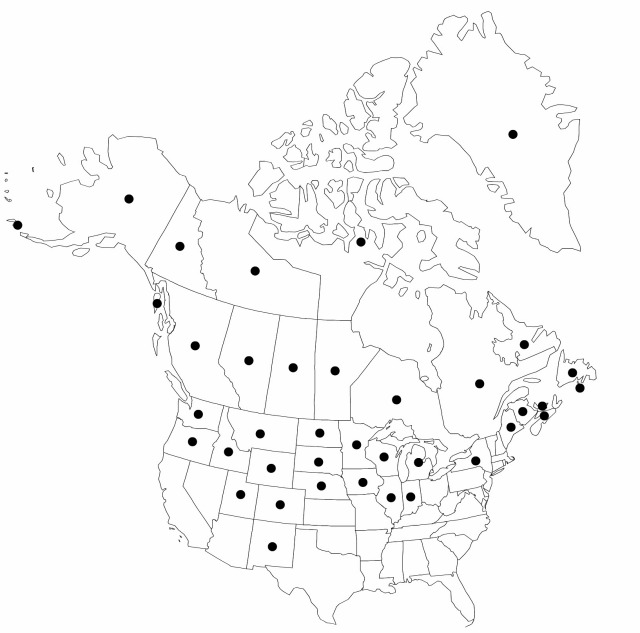Eriophorum angustifolium
Verz. Gew. Teutschl., 153. 1782.
Plants colonial from long-creeping rhizomes. Culms to 100 cm × (0.8–) 1–1.2 mm distally. Leaves: blades flat, tip trigonous, channeled in cross-section, to 40 cm × 1.5–6 (–8) mm; distal leaf-blade much longer than sheath. Inflorescences: blade-bearing involucral-bracts 1–3, proximally blade, often sheath black, leaflike, longest 1–12 cm. Spikelets (1–) 2–10, in subumbels, patent or pendent, ovoid, 10–20 mm in flower, 20–50 mm in fruit; peduncles 5–60 mm, smooth or scabrous; scales lanceolate or ovate, 5–10 mm, with prominent midrib fading proximal to tip, apex ± acute; proximal scales without lateral ribs. Flowers: perianth bristles 10 or more, white or pale-yellow brown, 15–30 mm, smooth; anthers 2–5 mm. Achenes black, oblanceoloid, 2–5 mm.
Distribution

Alta., B.C., Man., N.B., N.S., N.W.T., Nunavut, Ont., P.E.I., Que., Sask., Yukon, Alaska, Colo., Idaho, Ill., Ind., Iowa, Maine, Mich., Minn., Mont., N.Dak., N.Mex., N.Y., Nebr., Oreg., S.Dak., Utah, Wash., Wis., Wyo., n Eurasia
Discussion
eriophorum polystachion linnaeus is a rejected name
Subspecies 2 (2 in the flora).
Selected References
None.
Key
| 1 | Peduncles glabrous or scabrous on angles; culms 20–100 cm. | Eriophorum angustifolium subsp. angustifolium |
| 1 | Peduncles usually scabrous all around; culms not more than 30 cm. | Eriophorum angustifolium subsp. triste |
"shortened" is not a number.